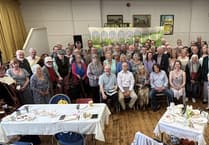WEST Devon, as part of the mining world heritage site, has benefited greatly from a £2.4-million, four-year investment project, according to a report released this week. The project's evaluation shows it is a 'clear economic success' despite the programme taking place against the backdrop of one of the most extreme financial recessions since the 1930s. The Cornish Mining World Heritage Site 'Discover the Extraordinary' investment project, funded by a European Union and DEFRA grant through the Rural Development Programme for England, has increased visitor numbers to the site's key attractions, improved trade for more than 400 businesses in the area, supported the creation of 24 new jobs and confirmed its value in terms of economic growth within the tourism offer of Cornwall and West Devon. The area is the largest World Heritage Site in the UK, covering almost 20,000 hectares within ten selected mining landscapes spread across Cornwall and West Devon. Inscribed as an UNESCO World Heritage Site in 2006, the site places Cornish mining on a par with international treasures like Macchu Pichu, the Taj Mahal and the Great Wall of China. Starting in 2010, the Discover the Extraordinary (DtE) investment project addressed the need for an integrated approach to the WHS tourism product development, business engagement and promotion. More than £1-million from the project was invested in improving the facilities at eleven partner mining visitor attractions, whilst the promotional activity supported the wider Cornish Mining Attractions Marketing Association membership. All of which has improved the destination asset value of the World Heritage Site to an 'unprecedented' degree. The project also invested in building new relationships across the tourism sector, promoting the Cornish Mining World Heritage Site as a tourism destination. The evaluation shows that amongst a sample of 20 inland WHS participating businesses, there was an average increase in visitor spending of 20%. Accommodation-based businesses within the area also benefited from the project. Over the period of 2010-2012, Cornwall saw a rise of 328,000 overnight stays during the project and the number of overnight stays in West Devon increased by 5,800 between 2009 and 2011. Before the start of the DtE project in 2010, Visit Cornwall's visitor survey indicated that of those asked, 9% stated that the main reason for staying in Cornwall or West Devon was the World Heritage mining landscape. By 2013, data confirmed that this figure increased to between 14.5-19%. The results also highlight an upward trend in those who plan, or would consider a visit to an industrial heritage attraction. Deborah Boden, World Heritage Site co-ordinator, said: 'The DtE project evaluation highlights that the integrated programme is a model for success, not only benefiting mining heritage but the whole of Cornwall and West Devon. 'We started this work in the midst of an extremely challenging economic climate yet even with these factors, the project has achieved its objectives, showing the site's future potential to generate resilient growth and strength within the tourism offer of Cornwall and West Devon, and confirming its economic value. 'Marketing the mining culture and landscape of Cornwall may not seem the most obvious economic growth opportunity, and many of our visitors will continue to be drawn by the already well-known beaches, coastlines and water sports. However, the results of this evaluation clearly show that bringing Cornwall and Devon's histories, landscape and culture alive, and co-ordinating communi-cations across the wider tourism sector, will attract new visitors, with a higher spend per head than the average.' She said priorities had been identified for future tourism development to build on the legacy of the project. Julian German, the Chairman of the World Heritage Site Partnership Board, said: 'The Cornish Mining World Heritage Site is a huge asset to Cornwall and West Devon and these findings illustrate its great economic potential. 'It is also extremely rewarding to see the fruits of our hard work and how this has benefited local businesses. 'I hope that economic, tourism and heritage bodies in Cornwall and Devon, and indeed across the country, can take on board a number of these extremely useful lessons and build on these findings to consolidate continued growth in these additional target visitor markets.' The full DtE evaluation and summary can be read online at http://www.cornish-mining.org.uk">www.cornish-mining.org.uk




This article has no comments yet. Be the first to leave a comment.